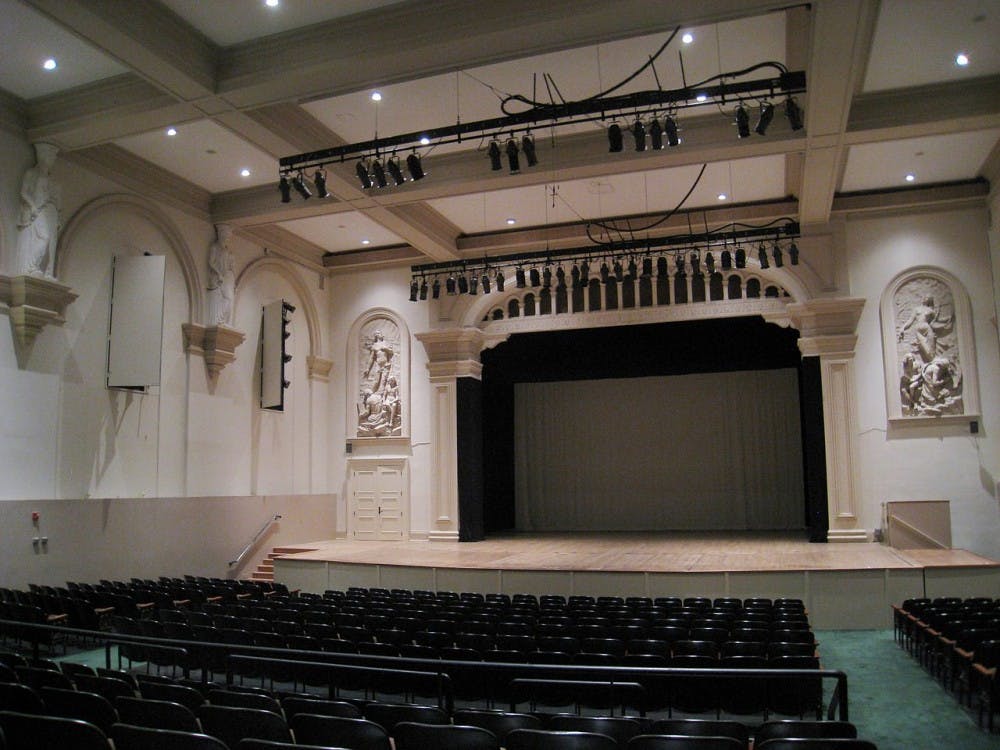This past Sunday, the Young People’s String Program (YPSP) of the Hopkins Peabody Preparatory put on its 33rd annual Halloween concert. The performance took place in the Miriam A. Friedberg Concert Hall, and the entire venue was full to the brim.
Although I’d seen several concerts in this hall before, seeing children on stage instead of adults made for a very unique and delightful kind of listening experience.
Children in the YPSP program receive individual and group instruction from faculty at the Peabody Institute through a combination of traditional and modern pedagogical philosophies. One of the philosophies that YPSP promotes is the Suzuki method, which emphasizes listening, repetition, parental involvement and encouragement. The Peabody Preparatory, of which YPSP is part, is well known and has produced famous musicians and composers such as Philip Glass, Tori Amos and Hilary Hahn.
Having been taught violin under the Suzuki method myself, I thought back on my early experiences practicing and playing music — all my gripes about practicing, all the times I tried to skirt by with minimal effort, all the times that I had to be coaxed by my parents to keep playing. Yet I remember enjoying it enough to keep at it, and playing music in large orchestras as I entered middle school and high school turned out to become some of my most formative and meaningful experiences. So while finding my seat and looking out at the young faces onstage, it was easy for me to imagine myself in their shoes and speculate about the kinds of half-nervous, half-excited emotions they must have been feeling.
The first thing I noticed coming into the concert hall was the relaxed atmosphere. Peabody concerts aren’t exactly relaxing. The music at these concerts can be heavy, and loudly coughing or talking during a performance, as with most classical performances, is seen as an unspeakable act of insolence. But since attendees at the YPSP performance included young children, as well as the parents trying to quiet them, it definitely took the edge off of the tension that I sometimes feel at classical concerts.
All of the string performers and the faculty directing the ensembles were dressed up in fun Halloween costumes, which further eased the tension. I saw costumes for characters like Spider-Man, Waldo, Elsa and even what looked like a Cards Against Humanity card. It was impressive that some of them were able to play their instruments at all given some of the complicated costumes they were wearing.
The first half of the concert featured a large cello ensemble, and the second half featured a large group of violins and violas. The pieces they played were surprisingly diverse and extensive. The selections ranged from arrangements of classical pieces and folk melodies to arrangements of songs like Danny Elfman’s “Nightmare Before Christmas” from the soundtrack of the same name.
The children found many ways of making the performance novel; for instance, they spun their cellos during “C String Boogie” and chanted and shouted for their performance of “Nightmare Before Christmas.” These extra details are part of what made the performance not just cute but also entertaining and unique.
String instruments can be difficult to play because they require uncomfortable postures and many hours of practice before sonorous sounds become possible. Given this inherent difficulty, the skill level of these performers was impressive for their age — they had correct posture and their playing was rarely out of tune. The last two pieces they played, “Gavotte in G minor” by Johann Sebastian Bach and “Theme from Witches’ Dance” by Niccolò Paganini were especially stirring showcases of their talent and attention to detail.
Attending the YPSP concert was a nice reminder about the crucial role that music can play in the formation of children’s identities and early experiences. Music is supposed to be a community-driven endeavor that depends on mutual listening and non-competitive cooperation, and the young performers exemplified this in the way that they played with each other.
And it wasn’t just the performers — you could even see it in the way that the parents interacted too, striking up conversations with each other and introducing themselves and their kids. There were smiles all around, and that was probably my favorite part of the concert and the small intermissions that filled up the spaces between the music.

















